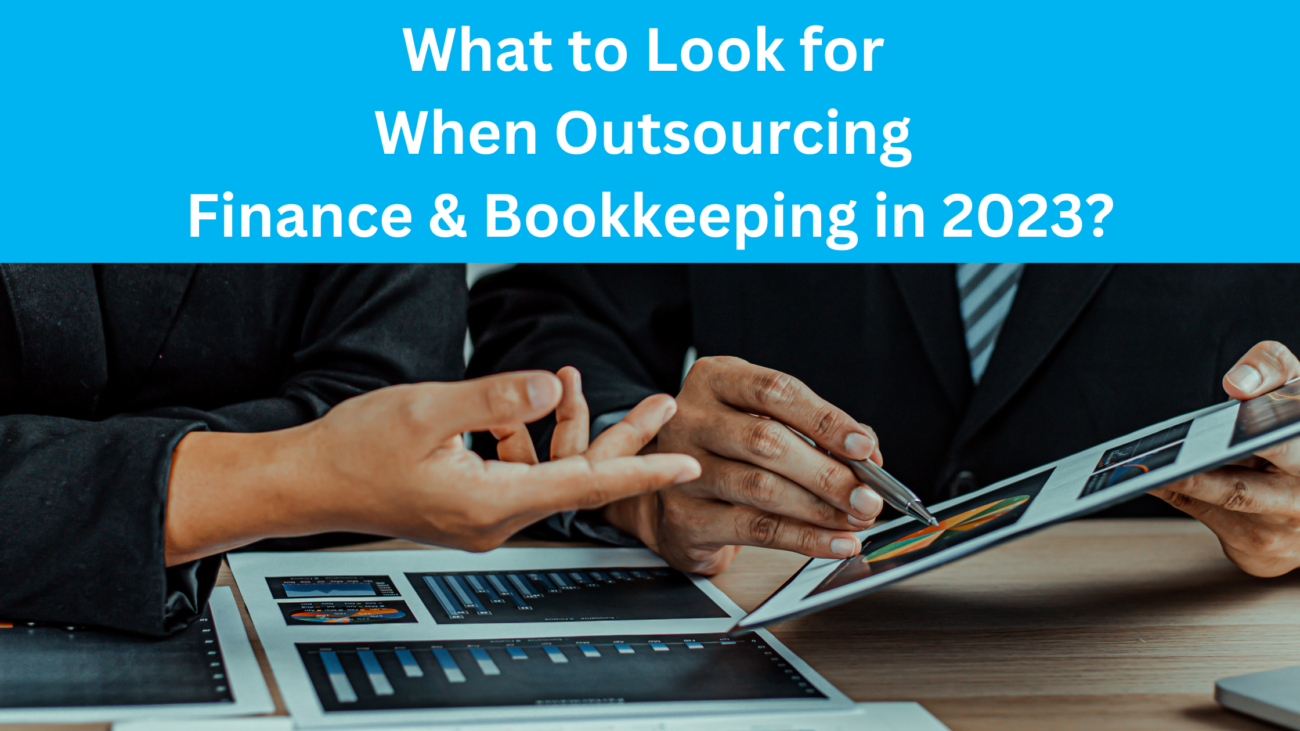Outsourcing finance and bookkeeping functions has become an increasingly popular choice for businesses of all sizes. It offers cost-effective solutions, access to specialized expertise, and allows companies to focus on their core activities. However, as we step into 2023, the landscape of outsourcing finance and bookkeeping is evolving. Here’s what you should look for when considering outsourcing these critical functions this year.
1. Technology Integration
In 2023, the integration of technology is paramount in finance and bookkeeping. Look for outsourcing partners who leverage the latest accounting software and tools. Cloud-based solutions are particularly valuable as they provide real-time access to financial data, enhance collaboration, and offer robust security features. Ensure your outsourcing partner is well-versed in technology and can adapt to your existing systems seamlessly.
2. Data Security and Compliance
Data security remains a top concern. Make sure your outsourcing partner complies with all necessary data protection regulations and has robust security measures in place. This includes encryption of sensitive data, secure transmission, and access controls. In 2023, compliance with data privacy laws like GDPR and CCPA is crucial.
3. Scalability
Your business needs will change over time. Whether you’re a startup aiming for rapid growth or an established company seeking stability, your outsourcing partner should offer scalability. They should be able to accommodate your changing needs, whether it’s handling increased transaction volume or adding more services as your business expands.
4. Industry Expertise
Each industry has its unique financial requirements and regulations. The outsourcing partner you choose should have expertise in your specific field. This ensures they understand your industry’s nuances and can provide tailored solutions.
5. Customized Services
One size doesn’t fit all. Your outsourcing partner should offer customized services that align with your business goals and financial needs. They should be willing to adapt to your unique requirements and provide solutions that fit your operations.
6. Communication and Support
Effective communication is essential. Your outsourcing partner should offer clear lines of communication, responsive customer support, and access to a dedicated account manager. This ensures that you can get assistance when needed and stay informed about the progress of your financial activities.
7. Cost Transparency
Outsourcing is often chosen to reduce costs, but it’s important to have cost transparency. Your outsourcing partner should provide a clear breakdown of fees and charges. Make sure there are no hidden costs, and the pricing structure is straightforward.
8. Financial Analysis and Insights
In addition to handling day-to-day financial tasks, your outsourcing partner should offer financial analysis and insights. They should be able to interpret financial data, provide reports, and offer recommendations for improving your financial strategy. Data-driven insights can help your business make informed decisions.
9. Reputation and References
Do your due diligence when choosing an outsourcing partner. Research their reputation in the industry, read client reviews, and request references. Speaking with businesses that have worked with the outsourcing provider can provide valuable insights into their performance and reliability.
10. Disaster Recovery and Business Continuity
Unforeseen events can disrupt business operations. Ensure your outsourcing partner has a robust disaster recovery and business continuity plan. This ensures that your financial data and services remain accessible even in challenging situations.
In 2023, outsourcing finance and bookkeeping can offer tremendous benefits, but the choice of an outsourcing partner is critical. That’s where KLOUDAC GLOBAL, your trusted partner for outsourcing success comes into place. By wearing the industry experience and expertise on our sleeves, our team is always prepared to handle any requirement basd on outsourcing accounting & bookkeeping. Reach to us for more information on our services and packages.
Call: +94 777 870 464
Email: info@kloudac.com






